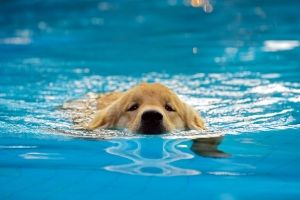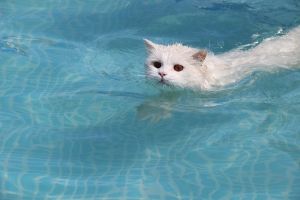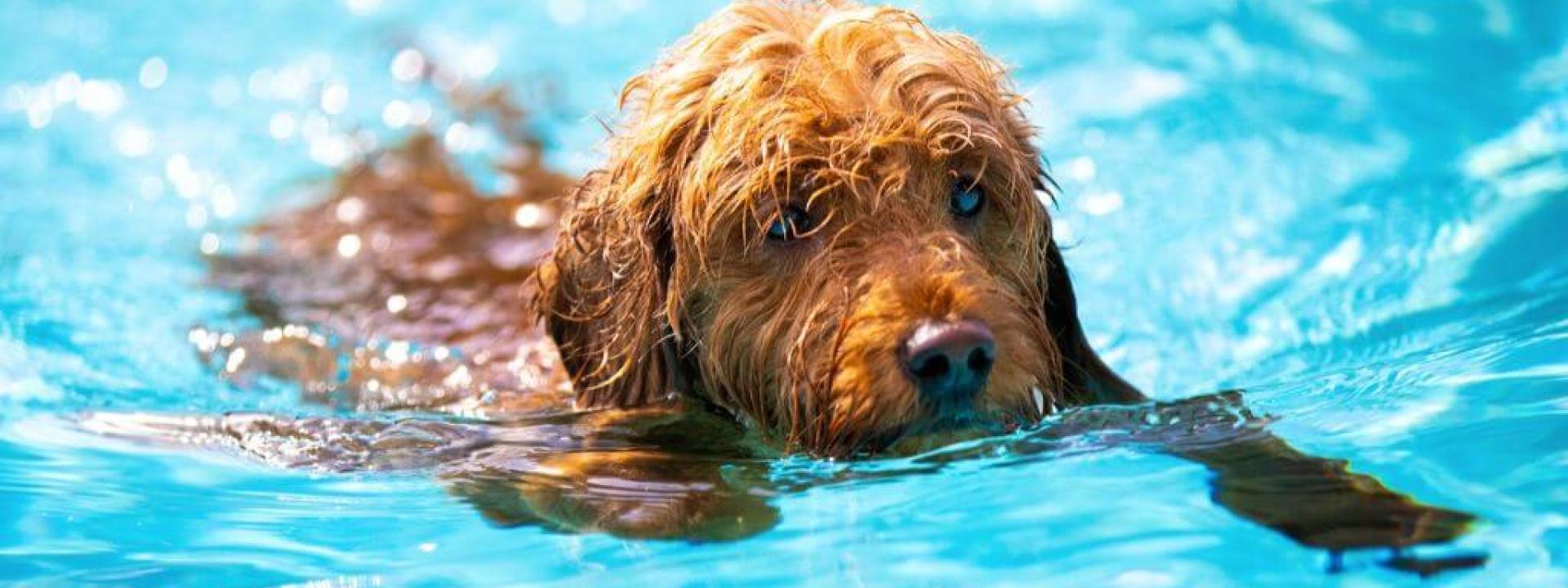As veterinarians, we've shared a lot of information about how to keep your pets safe around water. What you might not realize, however, is that, after saving your pet from a near-drowning, they might not be out of the woods. Just as with humans, pets can fall victim to dry or secondary drowning, and we explore that and how to keep them safe below.
What is the Root Cause of Pet Drowning?
Many pet owners mistakenly believe that dogs and cats are born knowing how to doggie paddle and, while many do have an innate ability to swim and many dogs use it for exercise, the trouble is being able to get out of a pool or hot tub. Training your pet to swim to the steps of your pool is a vital precaution to take so that your pet doesn’t swim aimlessly around the pool - attempting to pull itself up the sides - and tiring out in the process. Exhaustion is almost always the cause of drowning.
What Do I Do If I Find My Pet Unresponsive in the Water?
Puppies and wide chested dogs with short muzzles are some of the most vulnerable to drowning. If you find your pet unresponsive in the water, try not to panic ... we know this is easier said than done! Resuscitation is possible, though, if your pet is rescued in time. It’s best to try to resuscitate while someone is driving you to the vet if you can do so safely.

Below are the steps to take in the case of pet drowning, depending on whether your pet has a pulse or not:
The first step is to clear your pet’s airway of water. Puppies and small dogs can be held upside down to allow water to drain from the lungs. For larger dogs, lay them on their side and elevate the upper body so that the water can drain out of the nose and mouth.
Check for a pulse. If the heart is beating but your pet is not breathing, start artificial respiration immediately. Gently close the pet’s mouth and extend the pet’s neck to open the airway. Cover your pet’s nose with your mouth and exhale until you see the pet’s chest rise. Repeat until the pet is breathing on its own and then transport to your veterinarian.
If the pet does not have a pulse, pet CPR can be performed. Here is an informative video teaching the basics of pet CPR. In addition to the instructions contained in the video, the American Red Cross recommends laying deep-chested dogs on their back to perform CPR. They also offer certification in pet CPR.
What is Secondary Or Dry Drowning?
What if your pet has fallen into a pool and suffers a near-drowning? It's important to remember that your pet may still suffer some serious health-related after-effects of a near-drowning. Your pet has likely inhaled water into its lungs, and even after coughing it up or after observing water draining from the nose or mouth, there could be residual water remaining in the lungs. This could lead to pneumonia. Secondary drowning has been known to occur, even up to three days after the initial near-drowning.

Your pet may seem fine, but you should continue to watch for signs of dry or secondary drowning, which are:
- Lethargy
- Coughing
- Difficulty breathing
- Distress
- Anxiety
What Can I Do To Help My Pet Avoid Secondary Drowning?
Symptoms can progress very rapidly due to a lack of oxygen. We recommend any pet that has experienced a near-drowning be evaluated by your vet or, if after hours, that you take advantage of emergency care for cats or dogs. X-rays can determine if fluid in the lungs remains and, if so, your pet can be started on antibiotics to prevent pneumonia.
We know this is a frightening situation so don't forget to take the necessary precautions to keep any pools or jacuzzis safe, including pet fencing and alarms or motion sensors. If you have any questions about secondary drowning or the possibility of it in pets, please don't hesitate to give us a call.

